#isu figure skating
Text
everyday yuzuru hanyu has a plan and god goes along with it
52 notes
·
View notes
Text
ok can I figure skate post here for a second on this Taylor Swift tumblr… WHAT was that nhk 2023 Grand Prix women’s event??
don’t get me wrong I enjoyed it… but those plot twists!!!
#and I say this as an American!#mai my beloved#waka my beloved#haein my beloved#chants USA USA in the distance#yelim my beloved#every time I see Ava Marie Ziegler’s name I can’t help but think of dance moms#sorry girlie#nhk trophy 2023#nhk trophy#figure skating#isu figure#screaming about figure skating#grand prix 2023#grand prix figure#isu figure skating
1 note
·
View note
Text

Ilia Malinin's 4A (BV: 12.50 + GOE: 3.04 = 15.54) | GPF 2023, SP
ilia's performance tonight resulted in the first ever quad axel executed in a short program. including his 4Lz+3T and 3A, ilia's technical content is the most difficult ever attempted in short program history!
257 notes
·
View notes
Text
ISU announces reallocation of placements due to Valieva’s disqualification
2022 Olympic Team Event:
🥇USA
🥈Japan
🥉ROC
The scores were calculated by removing Valieva’s points, but the remaining women’s placements were not recalculated.

2022 Olympic Women’s Event: Valieva DQ from her 4th place ranking
2022 European Championships: Valieva DQ from her 1st place ranking
🥇Anna Shcherbakova
🥈Alexandra Trusova
🥉Loena Hendrickx
Full ISU statement
Following the ISU statement, the Russian Olympic Committee announced that it would appeal the ISU decision on the team event to CAS, on the grounds that sanctions against an individual athlete should not be the basis for reviewing results for a team event. Source
ETA: Skate Canada has issued a statement on the ISU’s decision. They disagree with the placements and will consider an appeal.
169 notes
·
View notes
Text

ISU uploaded a reaction cam of Stephane to Shoma's SP to Instagram
140 notes
·
View notes
Text

This year conclusion is that watching Euroivsion feels exactly like watching figure skating
#eurovision#esc 2023#käärijä#eurovison 2023#eurovison song contest#eurovision song contest 2023#joker out#bojan cvjetićanin#figure skating#fs#ISU
452 notes
·
View notes
Text
which figure skating programme permanently altered your brain chemistry?
(any discipline!)
fs fans pls interact, trying to find some moots who are equally obsessed with this crazy sport :')
#I'll go first#haru yo koi by yuzuru hanyu for..... obvious reasons....#that was the programme that pretty much got me into the sport tbh#and also voilà by satoko miyahara#it's like. permanently ingrained into me. idk who I was before it#i hope this reaches the right audience#just really want some fs friends!!!!#figure skating#fsblr#figure skating grand prix#isu figure#yuzuru hanyu#shoma uno#ilia malinin#adam siao him fa#kazuki tomono#yuma kagiyama#mikhail shaidorov#stephane lambiel#deniss vasiljevs#kaori sakamoto#mao shimada#loena hendrickx#haein lee#rinka watanabe#anastasiia gubanova#satoko miyahara#young you#ignore tags just trynna find people lol
93 notes
·
View notes
Text
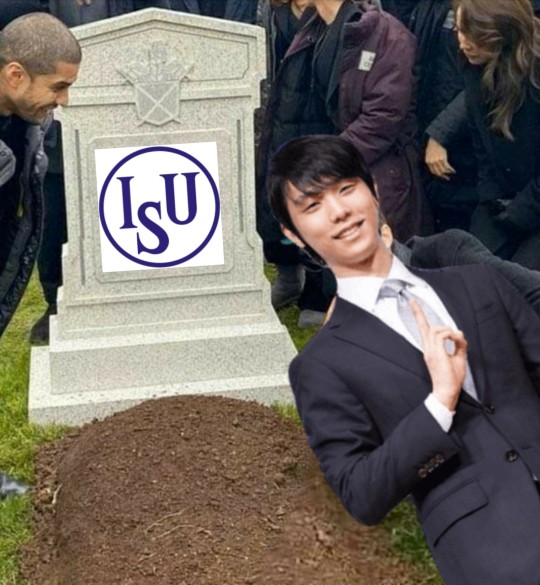
#if you saw the other one no you didn't#anyway last post about this today#figure skating#yuzuru hanyu#fuck isu ha#figure skating memes
2K notes
·
View notes
Text
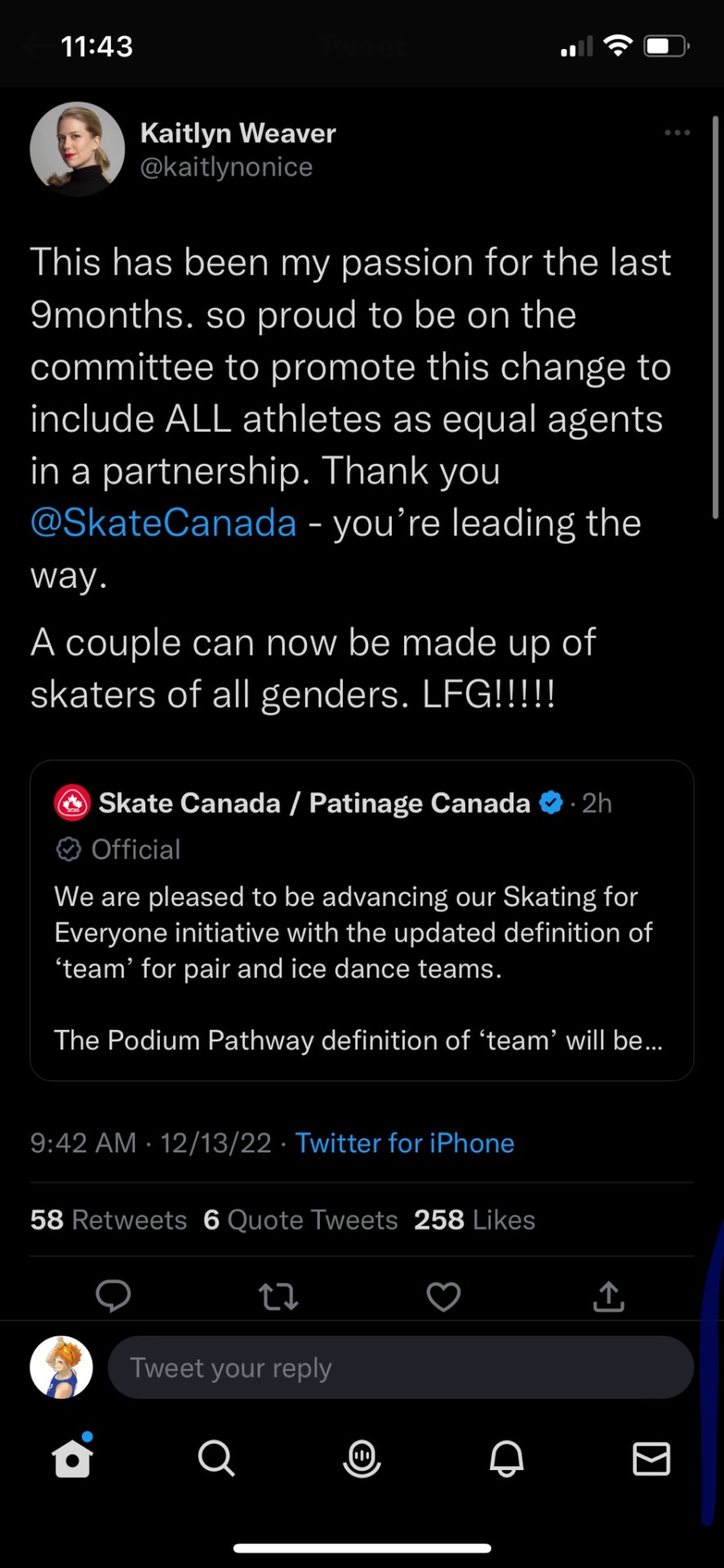
HUGE step forward for gender diversity and progress moving forward in our sport!
Skate Canada has officially announced a change in the rule book for Ice Dance and Pairs teams that will allow for teams of any gender composition to compete at local and National competitions, instead of limiting teams to (1) man and (1) woman.
This is such a marked achievement, and I really hope we see more National organizations and the ISU follow suit <3
#figure skating#isu figure#kaitlyn weaver#weaver Poje#skate Canada#pairs skating#ice dance#my fever dream of same sex competitive skating that I’ve had to gloss over sooooo many rules and ignore other stuff to make FEASIBLE —#I’m cryin y’all#also justice for Cain-Gribble/LeDuc#also true pioneers#lgbtqia
487 notes
·
View notes
Text

Oh she ate
#I’m fckin crying the tags#TAGGINT ISU???#mother is mothering#figure skating#ice skating#loena hendrickx
83 notes
·
View notes
Text
Have endeavored to watch both Euros and U.S. Championship this week. 90% of my schedule has been sitting on the couch watching figure skating. It’s been the best week of my life tbh.
#isu figure skating#figure skating#us championships#deniss vasiljevs#adam siao him fa#even been watching juniors which I do not do
4 notes
·
View notes
Text
Sooo... can we keep the Russians out of the sport permanently yet? Or are we eventually going to let them come back with more doped up children? Something tells me the ISU and I have different opinions on what the answer should be.
Kamila Valieva: Russian figure skater given 56 medications and supplements over two years
https://www.bbc.co.uk/sport/winter-sports/68570073
#figure skating#allie says stuff sometimes#cannot believe worlds are next week already#i need to find out where i stashed my 🇨🇦🇯🇵 from the 2020 worlds that never happened#for the record i would very much like putin to not invade other countries#i just also want the russians to stay the fuck out of figure skating too instead of the isu sucking up to them asap
44 notes
·
View notes
Text
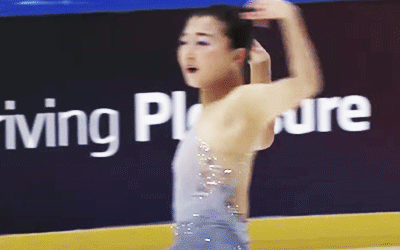

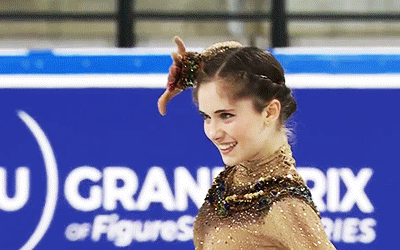

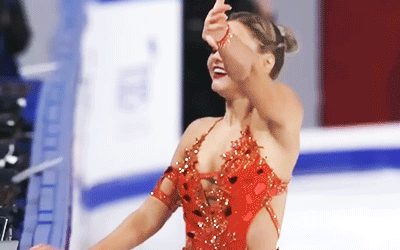

say hello to the ladies who have qualified for the 2023 ISU Grand Prix Final!
1. Kaori Sakamoto (JPN) - 30 pts
2. Isabeau Levito (USA) - 28 pts
3. Loena Hendrickx (BEL) - 26 pts
4. Hana Yoshida (JPN) - 24 pts
5. Nina Pinzarrone (BEL) - 24 pts
6. Rion Sumiyoshi (JPN) - 24 pts
Alternates: Kim Chaeyeon (KOR), Lindsay Thorngren (USA), Niina Petrokina (EST)
#figure skating#isu gpf 2023#kaori sakamoto#isabeau levito#loena hendrickx#hana yoshida#nina pinzarrone#rion sumiyoshi#fskateedit#look i was just looking at their slow mos#and then 4/6 of them were being flirty#hana what are you doin with those body rolls?!#loena i get you're trying to seduce the judges but ??#anyway they're all cuties#my gifs#gpf 2023
250 notes
·
View notes
Text
The ISU has added Solo Ice Dance as an international discipline. From the ISU website:
Solo Ice Dance is a parallel discipline to Ice Dance. Skaters perform the same Pattern Dances, Rhythm Dance and Free Dance segments. Ice Dance and Solo Ice Dance both draw from the fundamentals of ballroom dance and emphasize the techniques of edge work, flow and motion where Skaters must always skate to a defined beat, rhythm or theme. Solo Ice Dance has required elements that competitors must perform, creating well-balanced Ice Dance programs (Rhythm Dance, Free Dance); these programs include a dance spin, a step sequence, a twizzle sequence, a pattern dance element, edge elements, and choreographic elements. Edge elements, which replace lifts in partnered Ice Dance, consist of movements like spread eagles, bauers, hydroblades, and spirals to highlight edge control, flexibility and musicality. Solo Ice Dance follows the same elements and requirements for levels that are published annually by the ISU for Ice Dance. Each year new Rhythms and Pattern Dances are chosen to keep the sport current, fresh and entertaining.
Solo Dance is an opportunity for Skaters to develop Ice Dance skills without a partner, allowing for the sport of Figure Skating to grow. Solo Ice Dance demonstrates artistry, expression and musicality. Solo Ice Dance will also serve as a developmental tool for the discipline of Ice Dance and is an educational tool to assist our sport's developing nations in growing their athletes. Solo Ice Dance will allow Skaters to “learn how to skate to music” which is essential in Figure Skating across all disciplines.
Documents:
Solo Ice Dance Requirements 2023-24
Solo Ice Dance Levels 2023-24
Solo Ice Dance Scale of Values 2023-24
188 notes
·
View notes
Text
ISU released an article about Shoma

Two-time ISU World Champion and three-time Olympic medalist Shoma Uno of Japan has announced his retirement from competitive skating after a long and distinguished career and is ready to open a new chapter in his life.
“I have decided to retire from active competition,” Uno wrote on Instagram. “I am very grateful to have been able to continue skating for 21 years since I was 5 years old, and to have had a wonderful athletic life.”
The Japanese star will talk in more detail about his retirement and future plans in a press conference scheduled for May 14.
The 26-year-old looks back at a career with many highlights and also difficult times, but he always came back, proving his talent and showing resilience. When five-year-old Shoma went to the ice rink in his hometown of Nagoya with his father to have fun, he had no idea that he would become a World Champion, Olympic medalist and super star of the sport. He only knew that the enjoyed skating and kept coming back to the rink, taking lessons. He trained with Machiko Yamada, the coach of Japanese skating icon Midori Ito and also with Mihoko Higuchi for many years and worked his way up in the skating world.
Uno debuted in the ISU Junior Grand Prix in 2011 and was so tiny that he was unable to look over the boards. He won a few medals on the Junior circuit but his breakthrough came in what was his last Junior season in 2014/15 when he qualified for the first time for the ISU Junior Grand Prix Final where he claimed gold. Shoma went on to take the ISU World Junior title in 2015, in what was his fourth and final appearance at the event (climbing from 10th in 2012, 7th in 2013 and 5th in 2014).

Once at the senior level, Uno quickly became one of the top Skaters in the World. In his World debut in 2016 he placed 7th but then the next year won silver, his first of a total of four World medals. In his first Olympic Winter Games in 2018, Shoma skated off with the silver medal and returned on to the Olympic podium four years later, earning the bronze. In 2022 and 2023 Uno crowned himself ISU World Champion.
However, in between there was a time of struggle. In the 2019/20 season, for the first (and only) time in his career, Uno finished off the podium in the ISU Grand Prix Series. He had left his coaches since childhood and struggled with confidence.
“At first, to be honest, I was thinking about finishing my career,“ he said in an interview at Skate America 2021 about this time.
“I did not know how much longer I would keep going. But imaging the end (I thought) maybe I'll enjoy the rest of this career as an athlete.“
Uno started to work with two-time World Champion Stéphane Lambiel as his coach and choreographer in fall 2019 and soon came back strong. He grew as an athlete and a performer with beautiful programs that highlighted his versatility: “Turandot” (Free Skating 2017/18), “Great Spirit” (Short Program 2020/21), “Bolero” (Free Skating 2021/22) and “Spiegel im Spiegel” (Free Skating 2023/24) to name a few.
At the same time, the Japanese star always pushed the limits technically and made history by becoming the first Skater to perform a quadruple flip in competition in 2016.
“When I train and want to become better, it's not good for me to work on what I can already do. If I'm satisfied with just giving 80 per cent, I'm not good. The right training for me is to push my limits,” Uno said in an interview.
The Japanese Skater has an independent mind and a fun personality. He has a Youtube Channel where you can meet his three toy poodles Emma, Baron and Toro.
“When I am on the ice, I am totally focused on my sport, but when I'm off the ice, I am sure most people know I am just a lazy slacker, but I thought that would be a good way to show to the people how I am off the ice, but still this is Shoma Uno,” he explained.
When asked who inspires him the most, Shoma’s surprising answer was:
"Myself. Of course, I think I am inspired by many people and heard some good words from everyone, too, but in the end when you break it down, I do feel that it is myself that inspires me and sadly, I don't listen to anyone. Sometimes I listen, but mostly I go with my own mind,” he added.
For sure Uno will follow his own ideas in the years to come but you can certainly expect to see him gracing the ice in shows for a while.

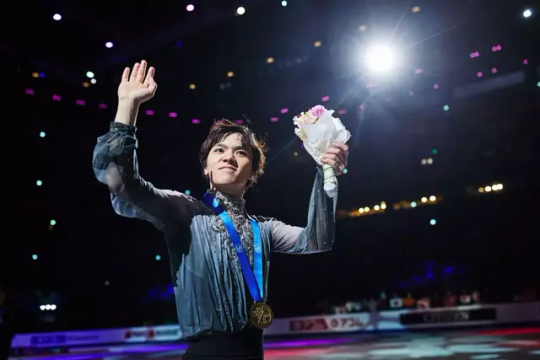
#shoma uno#figure skating#isu#happy retirement shoma#it's a nice article that I think sums up Shoma's career pretty well#also adding links to his Insta and Youtube is a good move as I still think both acc are quite unknown among non-Shoma fans
39 notes
·
View notes
Text
Ice Dance Reimagined
With the upcoming ISU Congress in Summer of 2024 and ice dance seemingly in an unending beta of rule changes, I figured I would float a few thoughts on the many changes that have been made over the past few years.
As I mentioned in my RD Rules post, the ISU has essentially made moves to return to the original dance (making the change from short -> rhythm dance even more pointless in the first place) choosing to dictate broader themes.
To me, what makes ice dance so unique amongst all the disciplines is the variety of elements and styles that each team is expected to have in their repertoire and the fact that even in a given SD/OD/RD theme, people have to go out of their way to have a unique take. The rules which have lowered difficulty--in the name of giving skaters more room to be creative--have in fact resulted in the opposite. More teams are doing the same difficult features, same footwork, same lifts, same transitions than ever before. Both drawing on old choreography and leading to homogeneity across the discipline.
I propose a scheme which is a compromise of the two conflicting motions in ice dance right now: 1) the “no pattern ever” give everyone freedom vibes and 2) the people who believe the pattern is king. Alternate having a patterned and original short dance, giving the discipline an opportunity to develop new patterns (the original intention of the pattern dance type step sequence) while also ensuring that teams are continuing to emphasize solid ice dance foundations like skating in hold.
Original Short Dance Layout
1PSt
2Pst
Non-touch midline step sequence (style A)
Twizzles
Lift
Patterned Short Dance Layout
Pattern 1
Pattern 2
Non-touch midline step sequence (style A)
Twizzles
Lift
What the ISU (and choreographers/coaches) have fundamentally misunderstood about the appeal of patterns is that EVERY step is intentional and meant to elicit a specific effect and contribute to an overall impression. There's a reason that even though the Yankee Polka and Finnstep and Tango Romantica all include a LFI Closed S-Step, they have completely different timing and contribute to very different impressions. And it is because the general footwork in the pattern, in addition to just the difficult steps and turns, is geared towards reflecting the unique character of that pattern. I cannot count the number of pattern step sequences since 2017 that have effectively been copy pasted across blues, Latin, foxtrot/quickstep, blues x2, and Latin x2 once again programs with only minor changes to mini-lifts. They lack intention, they are the slowest section of the program for a good 90% of RDs because every team--no matter the style--is attempting to make their turns as drawn out as possible to get credit.
I propose that in original dance years there are 2 PSt segments, each with 3 KPs with the former 4th KP serving as a choreographic benchmark. This would allow for direct comparison of teams doing the same steps (and not allow teams to do the exact same difficult turns 5 years in a row) while simultaneously incentivizing creativity.
For example, under “Jig” below there are the following guidelines:
Jig is characterized by (1) high tempo, (2) rapid toe and heel steps, (3) jumps, kicks, hops and other accents including slides and shuffles, (4) tight and rigid torso, emphasis on leg movements over arm movements, (5) music in 12/8, 6/8, 9/8, 2/4. Teams are expected to pick music and a type of jig dance which fits these characteristics. 1PSt must start at center ice, 2PSt must end at center ice.
An example of key points:
1KP1: A) LFI Counter, LBI Bracket B) LBI Counter, LFI Bracket in any variant of closed hold except basic hand-in-hand
1KP2: both skip, LBO C-Step, RFI Swing S-step. in killian or foxtrot variant.
1KP3: A) RBO 1.5Tw, any kicking/tucking motion, RFI Bracket, RBO Bracket. B) LFO 1.5Tw, any kicking/tucking motion matching/mirroring/corresponding to partner A, LBI Bracket, LFO Bracket. Partners must be touching once exited from twizzles.
1PSt being completely prescriptive in KPs and 2PSt being slightly more flexible:
2KP1: both beginning any bracket, immediate counter, 1-5 intermediate steps where at least one partner must hit at least one difficult skating position* for at least a 1/2 beat, skid exit.
2KP2: both beginning swing FO C-Step, 3-8 intermediate steps/turns with partners MIRRORING each other, ending BO Counter. Partners must be touching entire time
2KP3: both beginning double S-step, 1-4 intermediate steps, ending with one partner on a BO edge and picking into the ice and the other partner doing at least one revolution around. PSt, officially concluded when the stationary partner resumes motion. Partners much be touching at two points until the first revolution around in 2KP3 is concluded.
Skaters would receive credit for the KPs accomplished in both and would receive a fourth Y/N based on whether they met choreographic requirements outlined in italics above.
*difficult skating position: any position where the skating leg is bent at least 90 degrees (shoot the duck, hydroblade, any lunge, any crouch), besti squat, spread eagle, ina bauer, spiral, layback, etc.
Now for some theme ideas:
2024-2025 - Patterned Short Dance - Grand Ballroom with a pattern of Golden Waltz
Teams must skate a program which reflects the character of the waltz particularly with regards to (1) lilting knee action, (2) closed position in hold, (3) repeated rotation as a unit when progressing across the ice, (4) movements should appear long, extended, and with sweeping open posture, (5) tone and musical themes may vary as long as a waltz character is maintained.
2025-2026 - Original Short Dance - Jig
Jig originated in Ireland and Scotland, gradually progressing throughout the British Isles and mainland Europe and then throughout the world including in the Metis people of Canada and Louisiana. Straight and sand jigs were developed in the US by African Americans in the 19th century which eventually influence the creation of jazz and tap. Jig is characterized by (1) high tempo, (2) rapid toe and heel steps, (3) jumps, kicks, hops and other accents including slides and shuffles, (4) tight and rigid torso, emphasis on leg movements over arm movements, (5) music in 12/8, 6/8, 9/8, 2/4. Teams are expected to pick music and a type of jig dance which fits these characteristics.
2026-2027 - Pattern Short Dance - Percussive Dances with a pattern of Paso Doble
(1) Stomping, toe picking, clapping, other percussive elements involving hitting the legs or torso, (2) dance is primarily danced to the RHYTHM and TEMPO not the melody, if there is a section without audible rhythm the team should create that beat using percussive elements (3) music must include a beat throughout, a melody is not necessary, (4) a theme should remain consistent throughout, if movements are drawn from a traditional dance they should reflect the character of the music chosen and the pattern should be interpreted appropriately.
2027-2028 - Original Short Dance - Music and Rhythms of the 1970s
The 1970s were one of the most influential eras of music, giving birth to entire new genres and styles and furthering the popularity of funk, soul, R&B, jazz, glam rock, folk rock, pop, disco, reggae, electronic music, and the birth of hip hop, it was defined by experimental sounds due to new music equipment.
(1) Music choices and rhythms should be COHERENT and related, the two music choices should be related thematically, structurally, or stylistically beyond more than just being from the 1970s, (2) one piece of music should be high tempo (>120bpm) and one piece should be low tempo (<100bpm), a third piece can be skated to any tempo, (3) the holds, movements, and steps in the PSt should reflect the style of music and dance chosen
2028-2029 - Pattern Short Dance - Jazz and Tap with a pattern of Quickstep
Jazz dance is a particularly broad genre that includes original social dances like the Charleston developed in parallel to the birth of jazz in Harlem, as well as more modernized styling.
Skaters should take inspiration from dancers like Bill Robinson, Jack Cole, Fred Astaire, Gus Giordano, nd Bob Fosse, as well as Broadway stage choreography and tap dance.
(1) Music choices and rhythms should be COHERENT and related, the two music choices should be related thematically, structurally, or stylistically, (2) one piece of music should be high tempo (>120bpm) and one piece should be low tempo (<100bpm), a third piece can be skated to any tempo, (3) the Quickstep timing can be adjusted to fit the tempo of the music chosen and to reflect the character of the chosen choreography.
See: https://gotta-dance.com/brief-history-of-jazz-dance/
2029-2030 - Original Short Dance - Nuevo Latin
The ISU has done a whole lot of cha cha, rhumba, and samba, but those are FAR from the only Latin rhythms. Dancers will be challenged to develop a new pattern that isn’t already an ISU pattern (and one that hasn’t been done a million times).
Examples of other rhythms: bachata, cumbia, danzon, salsa, mambo, merengue, bomba, lena, perreo, etc.
(1) The entirety of the PSt should be done in the same style and tempo but can differ from the the rest of the program. (2) Dancers are only required to pick one rhythm style but 2-3 are permitted. (3) skaters must have two points of contact with each other the entirety of the PSt, (4) at least 6 changes of hold must take place during the PSt, this can be from the same to same hold as long as a step or turn takes place during the change, (5) 1PSt must begin at the end of the long axis, 2PSt must end at the same end.
Choreo deductions: obvious use of cha cha, rhumba, or samba music/choreo. Tango, paso doble, and flamenco also excluded.
2030-2031 - Pattern Short Dance - Folk Dances with a pattern of Polka
Folk and country dance is characterized by it's informal and reflection of the general populace intended for widespread social dance. As opposed to court and ballroom dances, it should not be characterized as refined, ritual, or for stage performance. Skaters are encouraged to choose a folk dance related to their background. (1) Polka is skated to a bpm of 120bpm +/-4 and can be skated to and interpreted in any kind of musical style, (2) the same folk dance theme should remain constant throughout the dance or if two dances are chosen they should be closely related (i.e. the non-touch midline step sequence done in the line dancing style and the polka in the square dance style) (3) skaters may have a non-touch portion of their 2PSt provided they remain within one arm-length of each other.
Examples of folk dances include: maypole, hora, tarantella, polka, square dance, clogging, Dutch crossing, oberek, mazurka, Morris , polska, ballu tundu, bhangra, circassian, dabke, garba, khigga, romvong, peacock dance, nongak, yangge, chacarera, zamba, malambo, marinera, akayida, kizomba, agbadza, baile folklorico, shota, rugovo, cumbia, landler, schuhplatter, sardana, dragon dance, lion dance, mapale, danza de la tijeras, jenkka etc.
2031-2032 - Original Short Dance - Swing and Social Dances
Despite the many years of jive, charleston, and jitterbug original dances, there is no swing (or related dance) pattern. Dancers are to pick a swing-adjacent dance style and create a pattern. Examples: charleston, lindy hop, jive, jitterbug, shag, boogie woogie.
(1) Dance style should generally be from the 1920s-1950s era, (2) skaters should include intricate changes of positions for each partner reflecting the highly athletic nature of swing dancing, (3) 1PSt should begin in front of the judges with a 1-2 second mini-lift and end in the same location, 1PSt and 2PSt should consist of similar patterns across the ice and each take one lap, (4) skaters should utilize hops, skips, assisted jumps, and up to 3 mini-lifts per PSt to reflect the character of their chosen dance.
Swing does NOT necessarily need to be up tempo if choosing a style such as West Coast Swing which is danced with a distinct lack of bounce.
And then with time in "pattern" years, new patterns will arise and be eligible for interpretation. Would love to hear people’s thoughts :)
#wtficedance#ice dance#figure skating#rhythm dance#future of fs#ice dance reimagined#kaitlyn weaver can you hear me#pattern dance#original dance#ice dance rules#opinion#rule changes#isu rule changes
35 notes
·
View notes